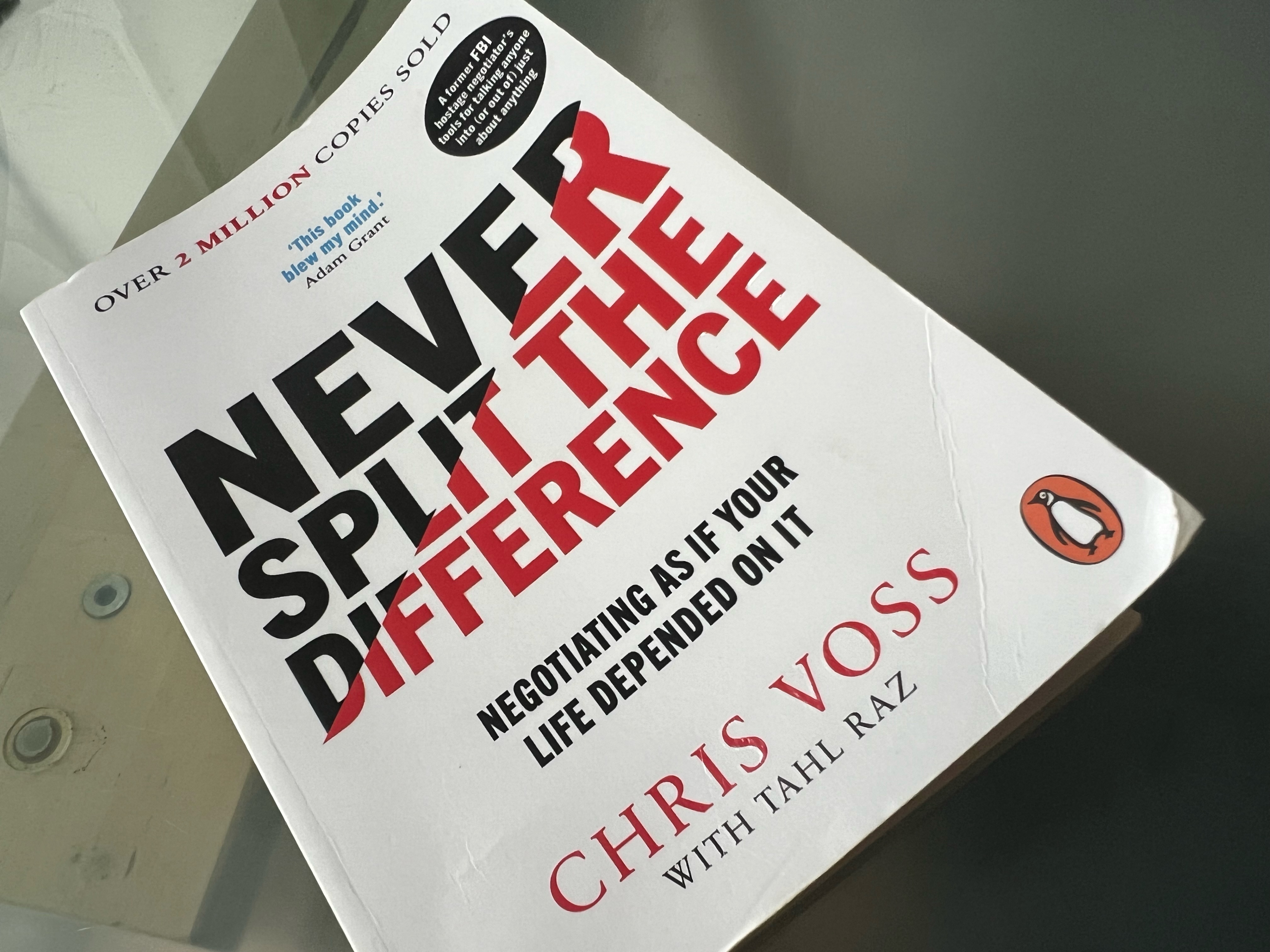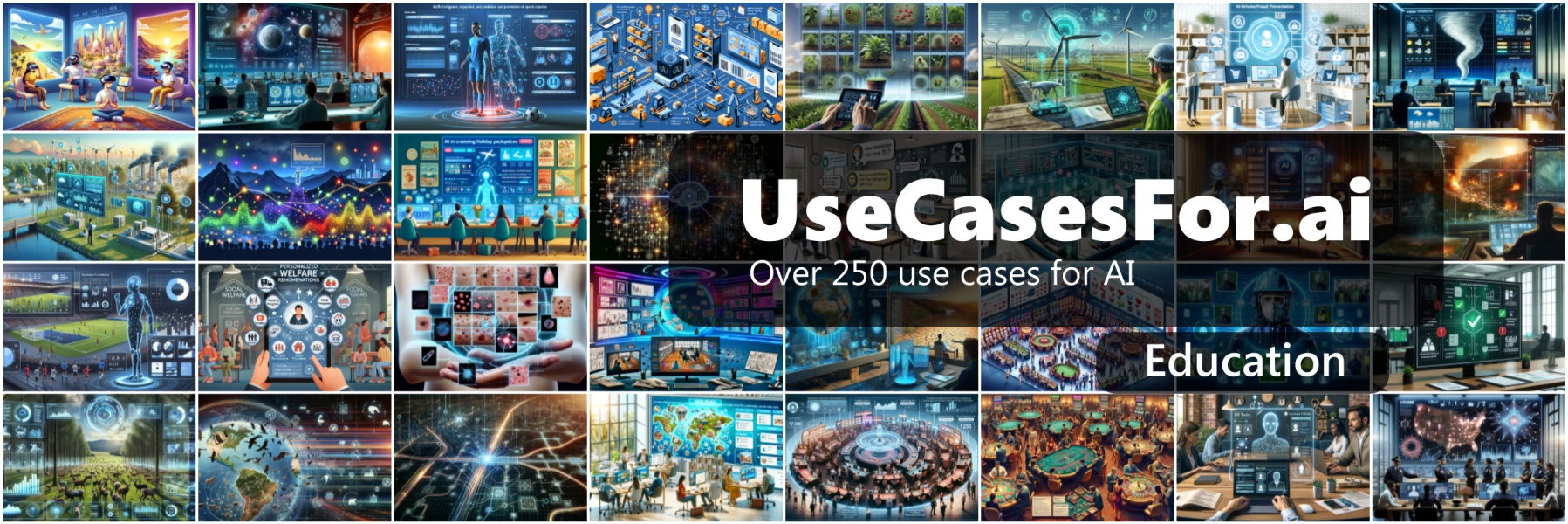"Never Split the Difference" by Chris Voss, a former FBI hostage negotiator shares real-life experiences with strategies for effective negotiation. Voss distills decades of high-stakes negotiation experience into accessible techniques that can be applied in everyday situations, from business deals to personal relationships.
Why Compromise isn't always the best outcome
Voss’s central premise challenges the traditional notion of compromise in negotiations. He argues that aiming for a middle ground often leaves both parties dissatisfied. Instead, he advocates for a more nuanced approach that involves understanding the psychology of the counterpart, leveraging empathy, and using tactical techniques to guide conversations toward favorable outcomes.
"No deal, is better than a bad deal"
Mirroring
One of the powerful techniques Voss discusses is mirroring.
This involves repeating the last few or the most critical words of the counterpart’s statement. It’s a simple yet effective way to build rapport and encourage the other person to elaborate without feeling pressured. By subtly reflecting their words back to them, you make them feel heard and understood, which can significantly reduce tension and open up more productive dialogue.
We often find ourselves or notice others doing this subconsciously (isopraxism).
Tactical Empathy
A standout technique in the book is "tactical empathy." Voss illustrates how identifying and vocalizing the other party’s emotions can build rapport and foster a cooperative environment. This approach contrasts sharply with the combative tactics often associated with negotiation, highlighting the importance of emotional intelligence. Tactical empathy involves actively listening to your counterpart, acknowledging their perspective, and expressing understanding of their situation and emotions. This helps to create a sense of trust and safety, making them more open to your suggestions and influence.
He described listening as "anything but passive" and the important difference between sympathy and empathy.
Labeling
Labeling is another crucial technique that Voss highlights. This involves identifying and naming the emotions or dynamics at play in a conversation. By saying things like, “It sounds like you’re frustrated,” or “It seems like this situation is causing you a lot of stress,” you validate the other person's feelings and demonstrate that you are paying attention. Labeling can diffuse negative emotions, making the counterpart feel understood and respected. This method is especially effective in high-tension situations, as it helps to calm the other party and creates a more constructive atmosphere for negotiation.
Calibrated Questions
The book delves deeply into the art of calibrated questions, which are designed to elicit detailed responses and encourage the counterpart to reveal their underlying motivations and constraints. These open-ended questions, such as “What’s the biggest challenge you face?” or “How can we solve this problem together?” are powerful tools for gathering information and steering conversations in a productive direction. Calibrated questions help to uncover the real issues at stake and enable you to address them more effectively, often leading to creative solutions that satisfy both parties.
Voss recommends using calibrated questions to have your counterpart help you find a solution to move the conversation forward. Genius.
Accusation Audit
Another key concept is the "Accusation Audit," where Voss advises negotiators to anticipate and address the other party’s potential objections before they arise. This proactive strategy can disarm adversaries and pave the way for more open and honest dialogue. It’s a technique that can be particularly useful in business settings, where misunderstandings and unspoken concerns can derail negotiations.
The idea being that you are upfront about the negative parts of your argument before your counterpart can be. Not only can it take ammunition away from your counterpart, it allows you to proactively state how you can overcome the negative aspects they were very likely to bring up.
This is why preparation and creating a script is crucial.
The Different Types of "Yes"
Chris describes the dangers of always pushing for "yes" during negotiation, especially too soon, citing common transparent questions from traditional salespeople asking numerous questions where the answer is obviously "yes".
He also mentions the different types of yes
- Counterfeit Yes - When the counterpart is just agreeing to end the conversation without conflict or willingness to commit
- Confirmation Yes - Positive answers to direct questions. It isn't the same as a commitment yes
- Commitment Yes - The yes you aim for in negotiations. It is a genuine agreement commitment to follow through
Make sure you recognise the different types of yes!
Understanding "No"
He also encourages the negotiator not to fear no as it is often, as it can be a productive step in negotiation often meaning one of the following that the negotiator must determine and respond to appropriately
- I am not yet ready to agree
- You are making me feel uncomfortable
- I do not understand
- I don't think I can afford it
- I want something else
- I need information
- I want to talk it over with someone else
In the end you can always as "What about this doesn't work for you?"
Find the Black Swan
Often through conversation and negotiation, there are pieces of information that when surface can shift or change your perspective or understanding of the negotiation. Look out for these black swans. Often they can help remove assumptions by either party and/or allow even greater value to be brought to the table.
Personal Stories and Anecdotes
The book is peppered with fascinating anecdotes from Voss's career, making it an engaging read. For instance, Voss recounts a tense negotiation with bank robbers in Brooklyn, demonstrating how mirroring language and tone can de-escalate a volatile situation. These stories not only provide practical insights but also underscore the high stakes involved in his line of work, lending credibility and gravitas to his methods.
Summary
"Never Split the Difference" is more than just a manual for negotiation; it’s a primer on human interaction and communication. Voss’s emphasis on empathy, active listening, and psychological insight transforms negotiation from a zero-sum game into a collaborative process.
What I really like is how Chris shows how powerful simple, short, well chosen questions can be and the importance of information gathering and preparation in negotiation.
"We don't rise to the occasion, we fall to our highest level of preparation"
This book is a must-read for anyone looking to improve their negotiation skills, whether they are seasoned professionals or just starting out. After all, life is just one big negotiation.
I strongly recommended this read for anyone seeking to navigate the complexities of human interaction with greater confidence and skill and will place it quite high on my All Time Favourite Book List.
And if you are looking for you next read, check out GoodBusinessBooks.com!
-- Lee
















